Some places are a real pain in the butt to get to. Of course if it’s a remote or rural location that’s one thing, but when its off the main highway of a country, well that is something else. Getting to Kratie was the beginning of what would be an epic journey for us. Over the next few days we endured broken down buses, blown out tires, drunk and belligerent tuk-tuk drivers, buses that were literally 5 hours late, and even a night bus that completely lacked headlights. But I’m ahead of myself.
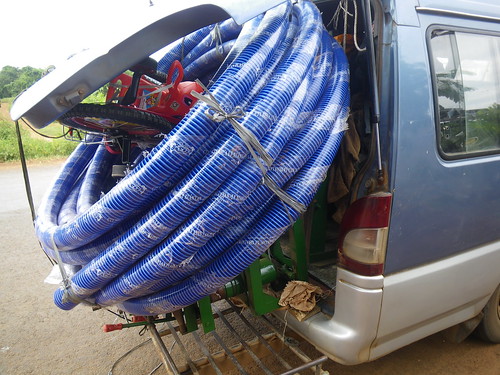
Kratie promised to be a little of a frontier town on the banks of the Mekong, with what the guidebooks describe as a charming colonial history. As any experienced traveler or travel blog reader at this point knows, reading between the lines of the guidebook, Kratie was sure to be an unimpressive location on the way to something else. We were enticed by the promise of Irawaddy River Dolphins, an extremely endangered species of dolphin that lives in deep pools of The Mekong River near Kratie. As luck would have it, the night before we left Siem Reap, Discovery Channel ran a program on the giant catfish and stingray of the Mekong River, and to our shock and amazement the host stopped in Kratie. High with hopes for dolphins, and perhaps something a bit ickier, we set off.
Dropped at the crossroads by our Siem Reap shuttle, we were piled into the back of a mini-bus (matatu, combi, dolmush, whatever you want to call it), relieved that the transfer actually showed up, we were still in a good mood a few minutes later when the driver pulled up to a commercial garage. With the roll up garage door opening, we were sure cargo was about to be loaded. Sure enough about 10 meters of thick blue plumbing pipe came out first. Rolled to a diameter of about a meter in a half, we laughed as the driver tried to shove it in the back. My sister, with her sarcastic sense of humor, laughed as random greasy boxes were loaded in the back. Biofuel. With little room left, we were sure the van was about to leave, but no, not yet, the driver could still see out the back window.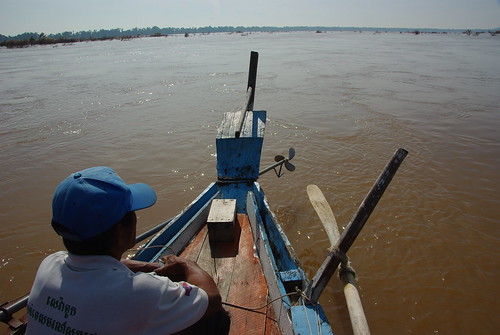 And that’s when we saw it. Piece by piece men from within the garage were taking out a full size table saw, with a crane. Yup, that baby was loaded in back with the plumbing lines, greasy boxes and backpacks. At some point a tricycle was shoved aboard an nearly an hour later, we set off.
And that’s when we saw it. Piece by piece men from within the garage were taking out a full size table saw, with a crane. Yup, that baby was loaded in back with the plumbing lines, greasy boxes and backpacks. At some point a tricycle was shoved aboard an nearly an hour later, we set off.
It won’t surprise you to hear we got a flat tire. What may surprise you is that the driver actually had a spare, but lacked a jack. Jacking the car up on a tree branch he and another man changed the tire and we were off again…
The next day, in the back of a tuk-tuk with a driver named “Lucky”, we headed out of town to see the dolphins. With a price-back guarantee, our boatman took us out to the middle of the river and we waited. Finally the dolphins appeared and without much fanfare disappeared again as quickly as they came. The famous, if not a little bashful river dolphins, didn’t want to be an attraction.
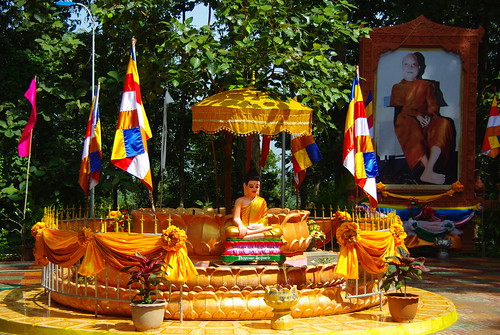 On the way back into town our little group stopped at a monastery that Lucky had told us was holding a festival. Unfortunately he forgot some of the important details and we arrived about eight hours to early to a festival, one that we were certainly not invited. The monks were gracious however and we poked around the Monastery a little bit. Having our fill we were about to leave when an Australian who was part of our party asked if any of us spoke French. Rusty as it might be, my husband and sister volunteered my skills and we were off to a private area of the monastery where the monks were eating lunch. It turned out that several of the older nuns spoke rudimentary French and as I translated the Australian’s desire to meditate with them, the nuns asked numerous questions about us and our lives back home. Set against a backdrop of 5 Buddhist monks eating [meat] and nuns chanting it was a memorable experience. The entire group was as fascinated and interested in us as we were with them and our time past quickly.
On the way back into town our little group stopped at a monastery that Lucky had told us was holding a festival. Unfortunately he forgot some of the important details and we arrived about eight hours to early to a festival, one that we were certainly not invited. The monks were gracious however and we poked around the Monastery a little bit. Having our fill we were about to leave when an Australian who was part of our party asked if any of us spoke French. Rusty as it might be, my husband and sister volunteered my skills and we were off to a private area of the monastery where the monks were eating lunch. It turned out that several of the older nuns spoke rudimentary French and as I translated the Australian’s desire to meditate with them, the nuns asked numerous questions about us and our lives back home. Set against a backdrop of 5 Buddhist monks eating [meat] and nuns chanting it was a memorable experience. The entire group was as fascinated and interested in us as we were with them and our time past quickly.
If You Go: Transportation to Kratie is easy, but getting out, especially if you are going North can be a porblem. Try to arrange onward transport when you arrive. Most transprotation going north will be at least 2 hours late by the time it arrives in Kratie. The dolphin boat price is setby the government, and if you choose not to take the boat, they will try to make you pay the same prices just to sit on the landing.
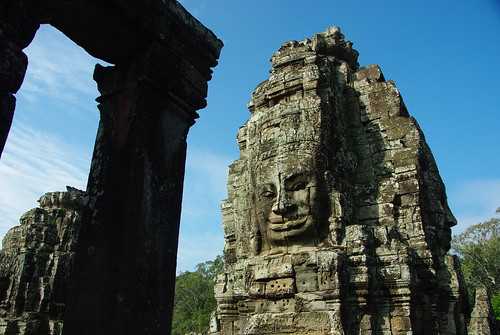
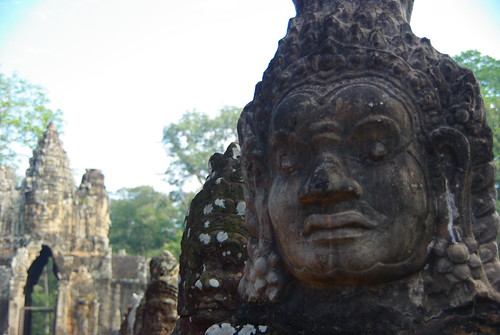
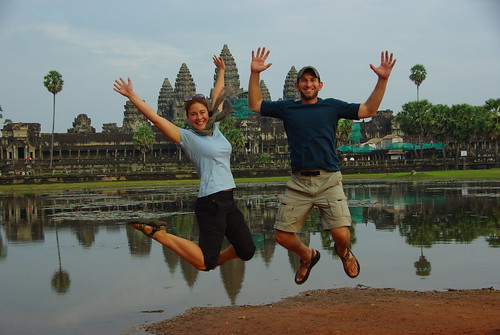
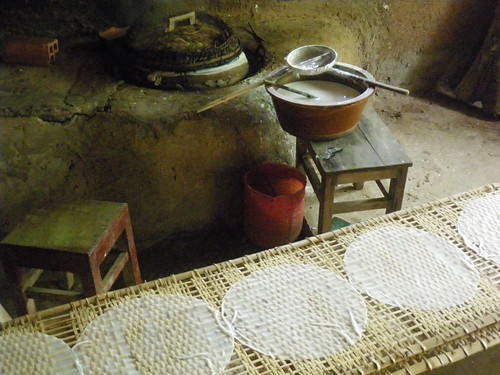

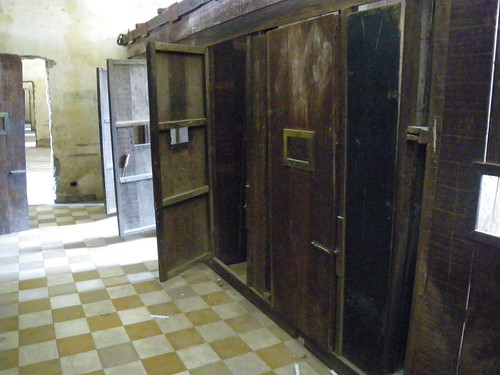
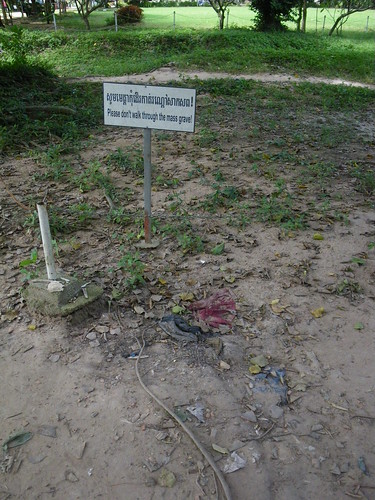
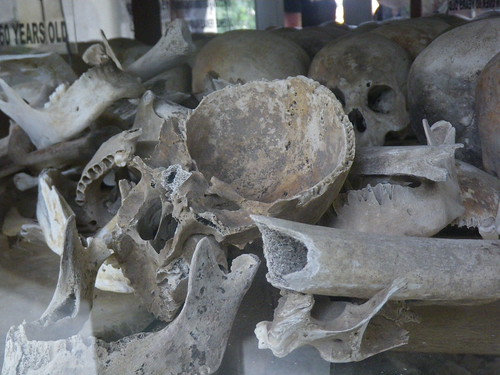
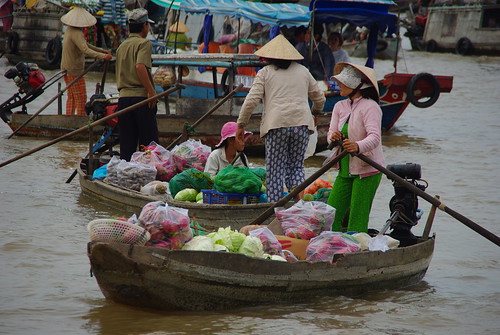
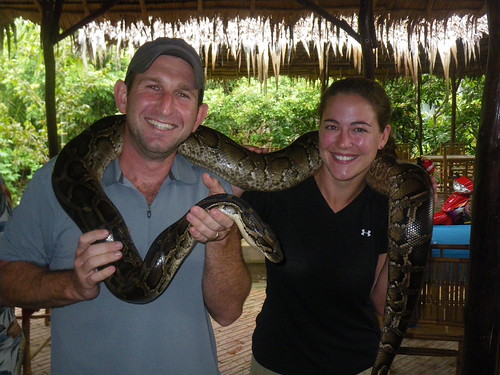

Recent Comments